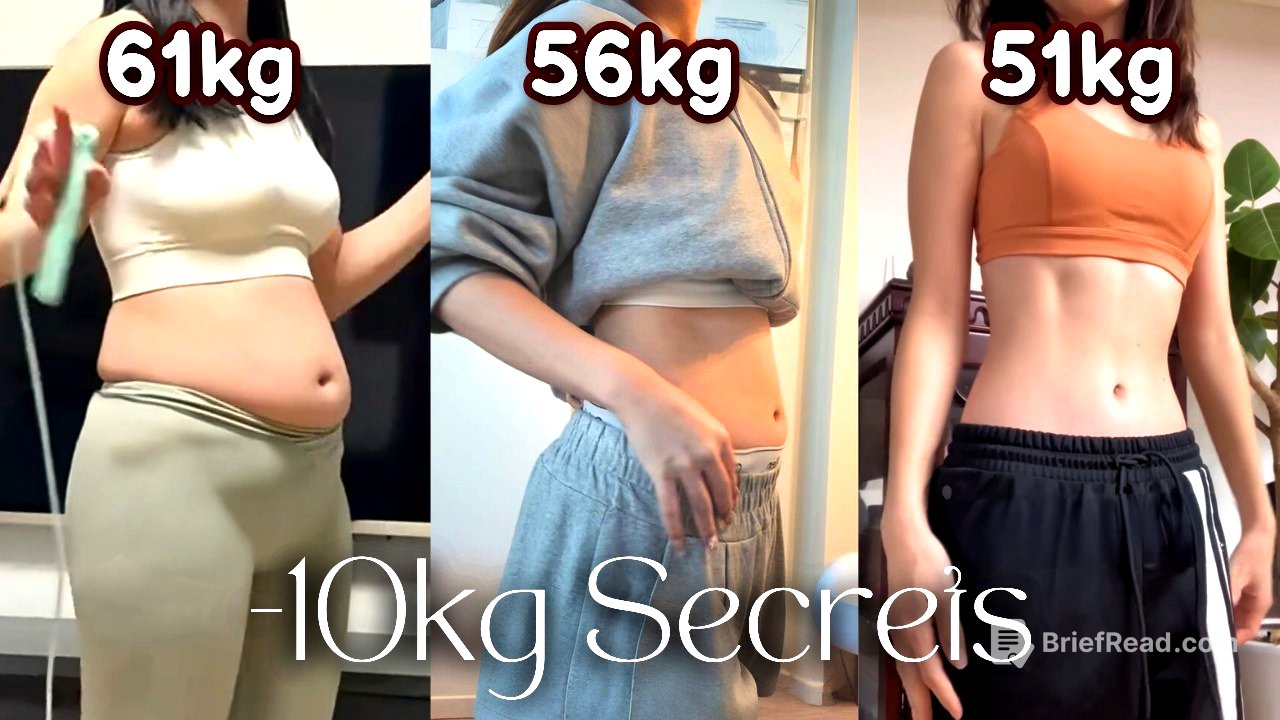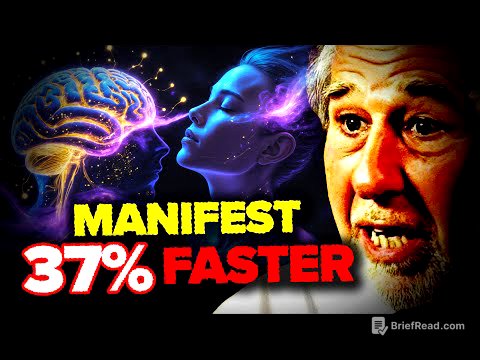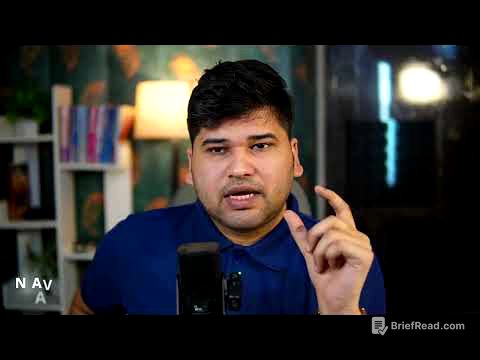TLDR;
This video talks about how to lose fat effectively by comparing two different approaches. It highlights the importance of working with your body instead of against it, focusing on strategies like reverse dieting, strength training, prioritizing sleep, managing cravings, and making informed food choices. The key takeaways are:
- Extreme calorie restriction and excessive cardio can be counterproductive, leading to muscle loss and a slower metabolism.
- Reverse dieting, strength training, and adequate protein intake can help preserve muscle mass while losing fat.
- Prioritizing sleep, managing cravings with water and apple cider vinegar, and making smart food choices are crucial for long-term success.
- Sustainable lifestyle changes are more effective than quick fixes.
Introduction: Samantha and Rachel's Fat Loss Journey [0:00]
The video introduces Samantha and Rachel, two girls with the same goal: to lose 10 kgs of fat in 3 months. Samantha prefers quick results, while Rachel favors a more relaxed approach. Both initially aim for a 500-calorie deficit through diet and exercise. The video sets the stage for comparing their contrasting methods and outcomes, emphasizing that losing fat is different from just losing weight.
The Initial Phase: Contrasting Approaches [0:34]
Samantha adopts a strict keto diet and cuts out her usual coffee, while Rachel practices portion control and intermittent fasting, still allowing herself to enjoy some of her favorite foods. Although both initially see progress, Samantha experiences fatigue, while Rachel feels fine. This highlights how different dietary approaches can affect energy levels and overall well-being.
The Plateau and Reverse Dieting [1:31]
When their initial progress stalls, Samantha drastically reduces her calorie intake to 1,200 and increases her exercise. Rachel, on the other hand, tries "reverse dieting," increasing her calorie intake to 2,100 per day. The video explains that extreme calorie restriction can trigger the body's survival mechanisms, slowing down metabolism and storing more fat. Rachel initially gains water weight, but soon starts losing fat steadily.
The Importance of Strength Training and Muscle Mass [3:30]
Samantha increases her cardio, feeling constantly hungry and drained. Rachel incorporates strength training three to four times a week, eats enough protein and fiber, and walks after meals. The video emphasizes that muscle burns calories even at rest, making it a crucial ally in fat loss. Strength training and adequate protein intake help preserve muscle mass during weight loss.
The Results: Muscle Loss vs. Fat Loss [4:20]
After a few weeks, both Samantha and Rachel have lost 4 kgs. However, Samantha looks weak and flabby, having lost muscle mass, while Rachel looks leaner and stronger, having primarily lost fat. The video highlights that losing muscle can slow down metabolism and make future weight loss more difficult.
The Impact of Sleep and Stress [4:51]
Samantha, frustrated and sleep-deprived due to weight loss pills, resorts to quick-fix diets that don't work. Rachel prioritizes sleep, getting a solid 8 hours each night. The video cites science that shows poor sleep increases the likelihood of storing calories as fat. Rachel's consistent sleep helps her lose fat faster.
Cravings, Food Choices, and Sustainability [5:54]
Samantha's cravings lead to overeating and a cycle of guilt and skipped workouts, causing her to regain the weight. Rachel manages her cravings by drinking water with apple cider vinegar, cooking at home, and choosing protein-rich, filling foods over processed options. She also allows herself occasional treats and rest days, making her approach sustainable.
Rachel's Success and the Cheat Code [7:37]
Over 3-4 months, Rachel successfully loses 10 kgs of fat and achieves her desired body. The video concludes by promising to share the "cheat code" for losing weight without stress or confusion, implying that the strategies Rachel used are the key to success.








![Python for Beginners – Full Course [Programming Tutorial]](https://wm-img.halpindev.com/p-briefread_c-10_b-10/urlb/aHR0cDovL2ltZy55b3V0dWJlLmNvbS92aS9lV1JmaFpVenJBYy9ocWRlZmF1bHQuanBn.jpg)
